HomeAbout Bihar
Bihar is the third most populous state in India and twelfth largest by area. Notwithstanding its tumultuous political
history very few know that Bihar boasts of the Origin of two of the major religions in the world, Buddhism and
Jainism. Furthermore, it was the home of one of the largest universities in the world, the Nalanda University. ![]() This
rich cultural heritage has shaped the destiny of Bihar and is woven in the folklores of ages. Maurya, Gupta and
Mughal empires have had their seat of power here. It was undoubtedly the main hub of Indian culture and
civilisation.
This
rich cultural heritage has shaped the destiny of Bihar and is woven in the folklores of ages. Maurya, Gupta and
Mughal empires have had their seat of power here. It was undoubtedly the main hub of Indian culture and
civilisation.
Great names dot the historical landscape of Bihar. In Ramayana, Mithila is described as the birthplace of Sita. This is probably the earliest reference to Bihar. Over times great rulers have presided over this part of India, and notably one of the biggest resistance to British occupancy , the Sepoy Mutiny began here. Mahatma Gandhi started his political career with his active involvement in Champaran Satyagraha in 1917.
Bihar was called Vihar and means “vihara” or abode and alludes to the resting place of Buddhist monks . Patna, the Capital of Bihar and the venue of this meeting, was known as Pataliputra in 600BC and changed names from Pataligarm, Kusumpur, Patliputra, Azimbad and then now to Patna. The Mighty river Ganges courses through the center of Bihar and divides it into two unequal parts, north and south Bihar. For the travel enthusiast Bihar is a veritable treasure, with attractions like the oldest temple in the world, the Mundeswari Devi Temple, the Ruins of Nalanda University, the various Buddhist Stupas, large forest reserves including the fourth largest tiger population in India, Asia's largest oxbow lake and many more.
The climate in Bihar is subtropical with hot summers and cold winters. Temperatures even in summer rarely exceed 29 degrees Celsius and September to April are the best months to explore the rich diversity of Bihar when the climate is pleasant and no rains. The Theme of Bihar in 2023 was “Yuva Shakthi Bihar Ki Pragati” and is in tune with the conference theme of starting Young and starting Right. We welcome you this land, once arguably the biggest seat of learning in the world.

This is a UNESCO World Heritage site built by Emperor Ashoka to commemorate the enlightenment of Lord Buddha under the Mahabodhi tree located in this Temple
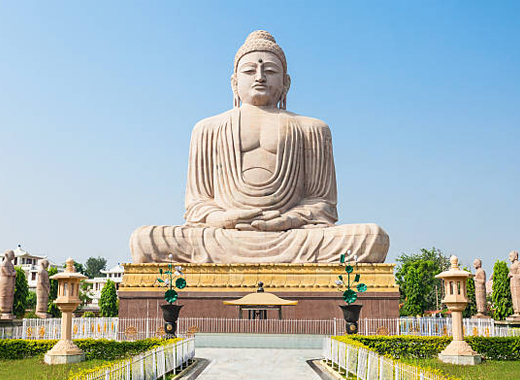
The Giant Buddha Statue is one of the many stops in the Buddhist pilgrimage and tourist routes in Bodhgaya. The statue is 19.507m (64.00 ft) high in meditation pose or dhyana mudra seated on a lotus in open air. The total height of the architecture is 80 ft.
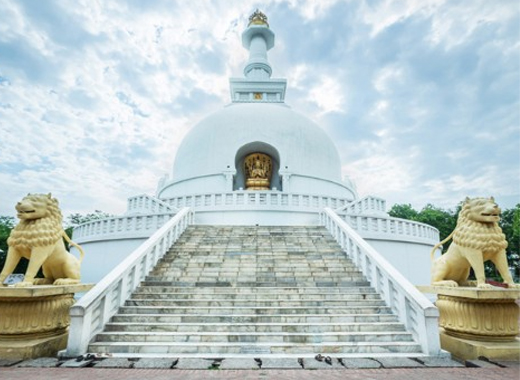
Vishwa Shanti Stupa, also called Peace Pagoda. It is located at the highest Point of Ratnagiri hill, at an altitude of 400 m, qualifying its serene charm as divine. The stupa is made up of white marble stones, symbolic of world peace and enshrines four golden statues of Buddha. It can be reached by means of a ropeway.

Lord Mahavir, the last Tirthankar attained ‘Nirvana’ at Pawapuri, 90km away Patna. This is a holy site for Jains as Lord Mahavir was also buried here, where presently the Jalmandir stands.
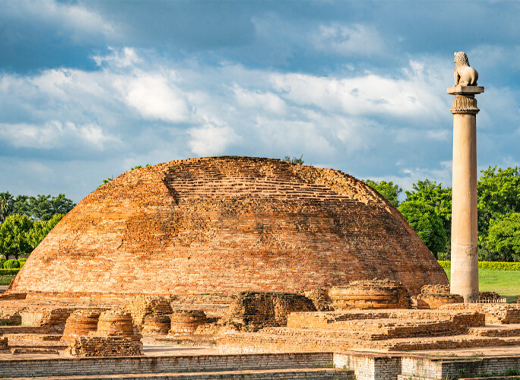
Ashoka Pillar is the most popular sightseeing destination of Vaishali situated near a Buddhist monastery and a coronation tanl, named Abhishek Pushkarni. It has also a Lion Pillar like the other Ashoka Pillars but the difference between this Ashoka Pillar and other Ashoka pillars is that, it one has only lion capital.
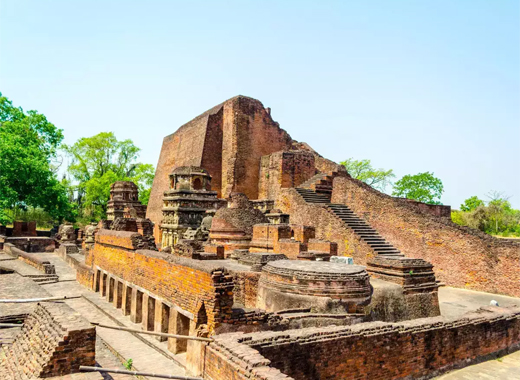
Ancient emperor Kumargupta established Nalanda University. Offering courses in almost every area of learning. The University attracted students from all over the world. The terracotta seal from the University has been put on display in the ASI Museum at Nalanda
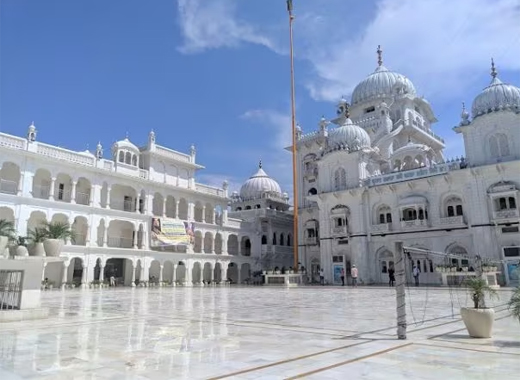
Takht Sri Patna Sahib also known as Harmandir Sahib, is a Gurdwara in the neighbourhood of Patna Sahib, India. It was to commemorate the birthplace of Guru Gobind Singh, the tenth Guru of the Sikhs on December 1666. The current shrine of Patna Sahib or Takht Sri Harmandirji Sahib was built in the 1950s.Guru Gobind Singh, the tenth Sikh Guru, was born in Patna, Bihar, on 22 December 1666.